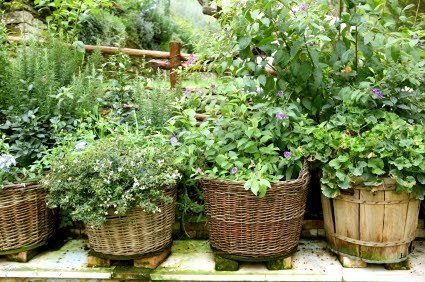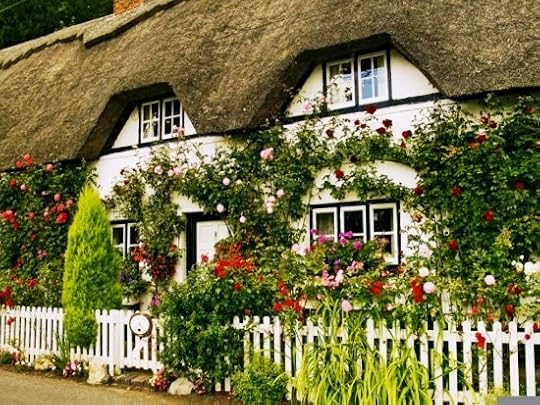Beth Trissel's Blog, page 102
January 27, 2011
The Wizard's Wife
 Today, the very talented author Toni Sweeney is my guest. We are fellow Pink Fuzzy Slipper Writers, where I've gotten to know Toni, who amazes me with her imagination. Weave your spell, my lady.
Today, the very talented author Toni Sweeney is my guest. We are fellow Pink Fuzzy Slipper Writers, where I've gotten to know Toni, who amazes me with her imagination. Weave your spell, my lady.
Once upon a time long, long ago in a dimension far, far away, there was a world called Ais Linn, where a people called the Ailiff Fae lived, a people blessed with the gift of Power. Ais Linn was a wonderful place, where leprechauns lived side by side with elves and sprites, and unicorns roamed the mountains, where they were safe from the hunters who sought them for their magical horns. In the Damhain Garrai, that dark forest covering a good portion of the kingdom and separating the two halves, werewolves prowled. The Aifliff Fae discovered secret openings, portals leading into another plane, to a planet called Earth. The fae moved between this world and their own…
And they found Earth fair an' the people likewise, if somewhat naïve in their beliefs. They thought the fae magical and the fae let them think it, because it was mostly true.
 Of the two rulers of Ais Linn, one family was the Tiarnas d'Geal Tina, the Lords of White Fire, and their opposite number was the Tiarnas d'Doit Tina, the Lords of Dark Fire. The Lords of White Fair were tall and fair, red-haired and green-eyed. Their wings like those of the dragonfly's wings with the colors of the Monarch, and from them was chosen the wizard who would be their Champion, the son of Prince Padraig who ruled half of Ais Linn. The Dark Lords were also tall and handsome but black-haired and crimson-eyed, their wings iron-gray and blood-red, and their wizard was as wicked as Padraig's son was good. Then it came about the Lord of White Fire learned the Lord of Dark Fire was planning to invade Earth and bring his evil there, that one day an astronomical event would occur, the Harmonic Convergence, when White Fire magic would be at its weakest, and no one would be able to stop him…
Of the two rulers of Ais Linn, one family was the Tiarnas d'Geal Tina, the Lords of White Fire, and their opposite number was the Tiarnas d'Doit Tina, the Lords of Dark Fire. The Lords of White Fair were tall and fair, red-haired and green-eyed. Their wings like those of the dragonfly's wings with the colors of the Monarch, and from them was chosen the wizard who would be their Champion, the son of Prince Padraig who ruled half of Ais Linn. The Dark Lords were also tall and handsome but black-haired and crimson-eyed, their wings iron-gray and blood-red, and their wizard was as wicked as Padraig's son was good. Then it came about the Lord of White Fire learned the Lord of Dark Fire was planning to invade Earth and bring his evil there, that one day an astronomical event would occur, the Harmonic Convergence, when White Fire magic would be at its weakest, and no one would be able to stop him…
 So he sent his Champion to live among the people and guard them, but the Champion of White Fire was young, and the women of Earth were comely, and the lad found 'twas true what he'd been warned, that mortal maids were drawn to the Fae like butterflies to honey, so he fell in love with a young maiden and lost his heart and would make her his bride despite his lord father's warning. And the Lord of White Fire was wroth because he knew nothing good ever came when a Fae loves a mortal…
So he sent his Champion to live among the people and guard them, but the Champion of White Fire was young, and the women of Earth were comely, and the lad found 'twas true what he'd been warned, that mortal maids were drawn to the Fae like butterflies to honey, so he fell in love with a young maiden and lost his heart and would make her his bride despite his lord father's warning. And the Lord of White Fire was wroth because he knew nothing good ever came when a Fae loves a mortal…
…that's the setting for Wizard's Wife. A faery wizard is forced to choose between his wife and unborn child and keeping the oath he made to protect the Earth. If he makes the wrong decision, he loses everything; either way, something precious will be lost forever, but will it be his own happiness or that of every person on the Earth?
 Cross the Portal into Ais Linn, where Unicorns roam and werewolves prowl, where a faery wizard struggles to protect the Earth from the Lord of Dark Fire…and a brave young woman follows her husband into danger, into a dimension where she's the only mortal in a land of magical beings…
Cross the Portal into Ais Linn, where Unicorns roam and werewolves prowl, where a faery wizard struggles to protect the Earth from the Lord of Dark Fire…and a brave young woman follows her husband into danger, into a dimension where she's the only mortal in a land of magical beings…
Where she's the Wizard's Wife.
It's a contemporary fairy tale, with unicorns and leprechauns, wizards and knights, feisty damsels and daring feats of magic, blending with Celtic legends for a read I hope everyone will enjoy.~
Sounds fascinating, Toni. And I love your pics and trailer.
Wizard's Wife was released January 15 by Class Act Books. For a look at Chapter One, go to: http://www.classactbooks.com/The-Wizards-Wife-Trade-by-Toni-V-Sweeney_p_269.html
More information on Toni may be found on her website: http://www.tonivsweeney.com/
Filed under: Uncategorized Tagged: Arts, Celtic legend, contemporary fairy tal, Earth, fantasy, Fantasy romance novel, Fiction, Harmonic Convergence, Magic, Monarch, Online Writing, Race and ethnicity in the United States Census, The Wizard's Wife, Toni Sweeney








January 25, 2011
"I have the simplest tastes~I am always satisfied with the best." ~Oscar Wilde
 "Better a witty fool than a foolish wit" ~Shakespeare
"Better a witty fool than a foolish wit" ~Shakespeare"Nobody has ever measured, even poets, how much a heart can hold."~ Zelda
"Anxiety is love's greatest killer. It makes others feel as you might when a drowning man holds on to you. You want to save him, but you know he will strangle you with his panic."~
"Anthropology is the science which tells us that people are the same the whole world over-except when they are different." ~Nancy Banks Smith
"A true friend is somebody who can make us do what we can." ~Ralph Waldo Emerson
 "If a dog will not come to you after he has looked you in the face, you should go home and examine your conscience."~ Woodrow Wilson
"If a dog will not come to you after he has looked you in the face, you should go home and examine your conscience."~ Woodrow Wilson
"The test of an adventure is that when you're in the middle of it, you say to yourself, 'Oh, now I've got myself into an awful mess I wish I were sitting quietly at home.' And the sign that something's wrong with you is when you sit quietly at home wishing you were out having lots of adventure." ~Thornton
"History teaches us that men and nations behave wisely once they have exhausted all other alternatives."~Abba Eban
 "The trouble with her is that she lacks the power of conversation but not the power of speech." ~
"The trouble with her is that she lacks the power of conversation but not the power of speech." ~
"He has no enemies, but is intensely disliked by his friends." ~Oscar Wilde
"He was happily married – but his wife wasn't." ~
"You have delighted us long enough." ~Jane Austen (Pride and Prejudice)
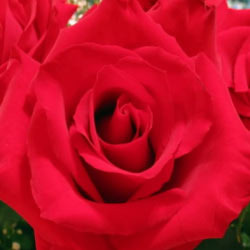 "I didn't attend the funeral, but I sent a nice letter saying I approved of it."~Mark Twain
"I didn't attend the funeral, but I sent a nice letter saying I approved of it."~Mark Twain
"There cannot be a crisis next week. My schedule is already full." ~Henry Kissinger
"Can't act. Slightly bald. Can dance a little."~ Screen Tester on Fred Astaire
Filed under: Uncategorized Tagged: Abba Eban, Fred Astaire, George Bernard Shaw, Henry Kissinger, Jane austen, Mark Twain, Ralph Waldo Emerson, Victor Borge








January 23, 2011
The History and Romance Behind 'Scarborough Fair'~
 "Are you going to Scarborough Fair?
"Are you going to Scarborough Fair?
Parsley, sage, rosemary, and thyme
Remember me to one who lives there
She once was a true love of mine." ~Scarborough Fair / Canticle by Simon & Garfunkel, based on an old English ballad, possibly based on an even older Scottish one
*I always wondered about this song and after much research have discovered that the meaning of the song and refrain has been much debated. One theory from this herb lore site:
 "The herbs parsley, sage, rosemary and thyme, recurring in the second line of each stanza, make up for a key motive in the song. Although meaningless to most people today, these herbs spoke to the imagination of medieval people as much as red roses do to us today. Without any connotation necessary, they symbolize virtues the singer wishes his true love and himself to have, in order to make it possible for her to come back again."
"The herbs parsley, sage, rosemary and thyme, recurring in the second line of each stanza, make up for a key motive in the song. Although meaningless to most people today, these herbs spoke to the imagination of medieval people as much as red roses do to us today. Without any connotation necessary, they symbolize virtues the singer wishes his true love and himself to have, in order to make it possible for her to come back again."
 A theory from this site: Nantucket Today: "The four herbs highlighted in the song symbolize a complex love riddle compiled by a spurned lover. The "one who lives there" was supposed to figure it out. In the days of Scarborough Faire, herbs were prized primarily for medicinal value as well as their ability to ward off foul odors and dye cloth. Many herbs were assigned multiple meanings related to the various ills or problems they were supposed to cure. The love riddle in this case was designed to woo the lady back through the hidden meanings of parsley, sage, rosemary and thyme."
A theory from this site: Nantucket Today: "The four herbs highlighted in the song symbolize a complex love riddle compiled by a spurned lover. The "one who lives there" was supposed to figure it out. In the days of Scarborough Faire, herbs were prized primarily for medicinal value as well as their ability to ward off foul odors and dye cloth. Many herbs were assigned multiple meanings related to the various ills or problems they were supposed to cure. The love riddle in this case was designed to woo the lady back through the hidden meanings of parsley, sage, rosemary and thyme."
I have no personal theory but found all of this interesting. According to good old Wikipedia: The ballad tells the tale of a young man, who tells the listener to ask his former lover to perform for him a series of impossible tasks, such as making him a shirt without a seam and then washing it in a dry well, adding that if she completes these tasks he will take her back. Often the song is sung as a duet, with the woman then giving her lover a series of equally impossible tasks, promising to give him his seamless shirt once he has finished.
 As the versions of the ballad known under the title "Scarborough Fair" are usually limited to the exchange of these impossible tasks, many suggestions concerning the plot have been proposed, including the hypothesis that it is a song about the Plague. In fact, "Scarborough Fair" appears to derive from an older (and now obscure) Scottish ballad, The Elfin Knight (Child Ballad #2) which has been traced at least as far back as 1670 and may well be earlier. In this ballad, an elf threatens to abduct a young woman to be his lover unless she can perform an impossible task ("For thou must shape a sark to me / Without any cut or heme, quoth he"); she responds with a list of tasks that he must first perform ("I have an aiker of good ley-land / Which lyeth low by yon sea-strand").
As the versions of the ballad known under the title "Scarborough Fair" are usually limited to the exchange of these impossible tasks, many suggestions concerning the plot have been proposed, including the hypothesis that it is a song about the Plague. In fact, "Scarborough Fair" appears to derive from an older (and now obscure) Scottish ballad, The Elfin Knight (Child Ballad #2) which has been traced at least as far back as 1670 and may well be earlier. In this ballad, an elf threatens to abduct a young woman to be his lover unless she can perform an impossible task ("For thou must shape a sark to me / Without any cut or heme, quoth he"); she responds with a list of tasks that he must first perform ("I have an aiker of good ley-land / Which lyeth low by yon sea-strand").
 As the song spread, it was adapted, modified, and rewritten to the point that dozens of versions existed by the end of the 18th century, although only a few are typically sung nowadays. The references to "Scarborough Fair" and the refrain "parsley, sage, rosemary and thyme" date to nineteenth century versions, and the refrain may have been borrowed from the ballad Riddles Wisely Expounded, (Child Ballad #1), which has a similar plot.
As the song spread, it was adapted, modified, and rewritten to the point that dozens of versions existed by the end of the 18th century, although only a few are typically sung nowadays. The references to "Scarborough Fair" and the refrain "parsley, sage, rosemary and thyme" date to nineteenth century versions, and the refrain may have been borrowed from the ballad Riddles Wisely Expounded, (Child Ballad #1), which has a similar plot.
Meaning of the Refrain:
Much thought has gone into attempts to explain the refrain "parsley, sage, rosemary and thyme", although, as this is found only in relatively recent versions, there may not be much to explain. The oldest versions of "The Elfin Knight" (circa 1650) contain the refrain "my plaid away, my plaid away, the wind shall not blow my plaid away" (or variations thereof), which may reflect the original emphasis on the lady's chastity. Slightly younger versions often contain one of a group of related refrains:
Sober and grave grows merry in time
Every rose grows merry with time
There's never a rose grows fairer with time
 These are usually paired with "Once she was a true love of mine" or some variant. "Parsley, sage, rosemary and thyme" may simply be an alternate rhyming refrain to the original. Folksong scholar Märta Ramsten states that folksong refrains containing enumerations of herbs — spices and medical herbs — occur in many languages. Parsley, sage, rosemary and thyme may also refer to the pagan belief, that when together, can be a love charm.
These are usually paired with "Once she was a true love of mine" or some variant. "Parsley, sage, rosemary and thyme" may simply be an alternate rhyming refrain to the original. Folksong scholar Märta Ramsten states that folksong refrains containing enumerations of herbs — spices and medical herbs — occur in many languages. Parsley, sage, rosemary and thyme may also refer to the pagan belief, that when together, can be a love charm.
From: http://www.songfacts.com/detail.php?id=1175
Scarborough is a small town on the coast of England. "Scarborough Fair" was a popular gathering in Medieval times, attracting traders and entertainers from all over the country. The fair lasted 45 days and started every August 15th. In the 1600s, mineral waters were found in Scarborough and it became a resort town. Today, Scarborough is a quiet town with a rich history.
 In Medieval England, this became a popular folk song as Bards would sing it when they traveled from town to town. The author of the song is unknown, and many different versions exist. The traditional version has many more lyrics.
In Medieval England, this became a popular folk song as Bards would sing it when they traveled from town to town. The author of the song is unknown, and many different versions exist. The traditional version has many more lyrics.
The lyrics are about a man trying to attain his true love. In Medieval times, the herbs mentioned in the song represented virtues that were important to the lyrics. Parsley was comfort, sage was strength, rosemary was love, and thyme was courage.~
The history and lore behind Scarborough Fair plays a role in my light paranormal romance, Scottish time travel, Somewhere My Lass~
*The wonderful image above of Scarborough Fair is from a charming children's site that features the song and others at: Diddlily Dee Dot's Dreamland~
Filed under: Uncategorized Tagged: Child Ballads, Elfin Knight, Herb, Light Paranormal Romance, Parsley Sage Rosemary & Thyme (Exp), Plant, Riddles Wisely Expounded, Rosemary, Scarborough Fair, Scottish Time Travel, Simon & Garfunkel, Somewhere My Lass, Thyme








Are You Going To Scarborough Fair~
 "Are you going to Scarborough Fair?
"Are you going to Scarborough Fair?
Parsley, sage, rosemary, and thyme
Remember me to one who lives there
She once was a true love of mine." ~Scarborough Fair / Canticle by Simon & Garfunkel, based on an old English ballad, possibly based on an even older Scottish one
*I always wondered about this song and after much research have discovered that the meaning of the song and refrain has been much debated. One theory from this herb lore site:
 "The herbs parsley, sage, rosemary and thyme, recurring in the second line of each stanza, make up for a key motive in the song. Although meaningless to most people today, these herbs spoke to the imagination of medieval people as much as red roses do to us today. Without any connotation necessary, they symbolize virtues the singer wishes his true love and himself to have, in order to make it possible for her to come back again."
"The herbs parsley, sage, rosemary and thyme, recurring in the second line of each stanza, make up for a key motive in the song. Although meaningless to most people today, these herbs spoke to the imagination of medieval people as much as red roses do to us today. Without any connotation necessary, they symbolize virtues the singer wishes his true love and himself to have, in order to make it possible for her to come back again."
 A theory from this site: Nantucket Today: "The four herbs highlighted in the song symbolize a complex love riddle compiled by a spurned lover. The "one who lives there" was supposed to figure it out. In the days of Scarborough Faire, herbs were prized primarily for medicinal value as well as their ability to ward off foul odors and dye cloth. Many herbs were assigned multiple meanings related to the various ills or problems they were supposed to cure. The love riddle in this case was designed to woo the lady back through the hidden meanings of parsley, sage, rosemary and thyme."
A theory from this site: Nantucket Today: "The four herbs highlighted in the song symbolize a complex love riddle compiled by a spurned lover. The "one who lives there" was supposed to figure it out. In the days of Scarborough Faire, herbs were prized primarily for medicinal value as well as their ability to ward off foul odors and dye cloth. Many herbs were assigned multiple meanings related to the various ills or problems they were supposed to cure. The love riddle in this case was designed to woo the lady back through the hidden meanings of parsley, sage, rosemary and thyme."
I have no personal theory but found all of this interesting. According to good old Wikipedia: The ballad tells the tale of a young man, who tells the listener to ask his former lover to perform for him a series of impossible tasks, such as making him a shirt without a seam and then washing it in a dry well, adding that if she completes these tasks he will take her back. Often the song is sung as a duet, with the woman then giving her lover a series of equally impossible tasks, promising to give him his seamless shirt once he has finished.
 As the versions of the ballad known under the title "Scarborough Fair" are usually limited to the exchange of these impossible tasks, many suggestions concerning the plot have been proposed, including the hypothesis that it is a song about the Plague. In fact, "Scarborough Fair" appears to derive from an older (and now obscure) Scottish ballad, The Elfin Knight (Child Ballad #2) which has been traced at least as far back as 1670 and may well be earlier. In this ballad, an elf threatens to abduct a young woman to be his lover unless she can perform an impossible task ("For thou must shape a sark to me / Without any cut or heme, quoth he"); she responds with a list of tasks that he must first perform ("I have an aiker of good ley-land / Which lyeth low by yon sea-strand").
As the versions of the ballad known under the title "Scarborough Fair" are usually limited to the exchange of these impossible tasks, many suggestions concerning the plot have been proposed, including the hypothesis that it is a song about the Plague. In fact, "Scarborough Fair" appears to derive from an older (and now obscure) Scottish ballad, The Elfin Knight (Child Ballad #2) which has been traced at least as far back as 1670 and may well be earlier. In this ballad, an elf threatens to abduct a young woman to be his lover unless she can perform an impossible task ("For thou must shape a sark to me / Without any cut or heme, quoth he"); she responds with a list of tasks that he must first perform ("I have an aiker of good ley-land / Which lyeth low by yon sea-strand").
 As the song spread, it was adapted, modified, and rewritten to the point that dozens of versions existed by the end of the 18th century, although only a few are typically sung nowadays. The references to "Scarborough Fair" and the refrain "parsley, sage, rosemary and thyme" date to nineteenth century versions, and the refrain may have been borrowed from the ballad Riddles Wisely Expounded, (Child Ballad #1), which has a similar plot.
As the song spread, it was adapted, modified, and rewritten to the point that dozens of versions existed by the end of the 18th century, although only a few are typically sung nowadays. The references to "Scarborough Fair" and the refrain "parsley, sage, rosemary and thyme" date to nineteenth century versions, and the refrain may have been borrowed from the ballad Riddles Wisely Expounded, (Child Ballad #1), which has a similar plot.
Meaning of the Refrain:
Much thought has gone into attempts to explain the refrain "parsley, sage, rosemary and thyme", although, as this is found only in relatively recent versions, there may not be much to explain. The oldest versions of "The Elfin Knight" (circa 1650) contain the refrain "my plaid away, my plaid away, the wind shall not blow my plaid away" (or variations thereof), which may reflect the original emphasis on the lady's chastity. Slightly younger versions often contain one of a group of related refrains:
Sober and grave grows merry in time
Every rose grows merry with time
There's never a rose grows fairer with time
 These are usually paired with "Once she was a true love of mine" or some variant. "Parsley, sage, rosemary and thyme" may simply be an alternate rhyming refrain to the original. Folksong scholar Märta Ramsten states that folksong refrains containing enumerations of herbs — spices and medical herbs — occur in many languages. Parsley, sage, rosemary and thyme may also refer to the pagan belief, that when together, can be a love charm.
These are usually paired with "Once she was a true love of mine" or some variant. "Parsley, sage, rosemary and thyme" may simply be an alternate rhyming refrain to the original. Folksong scholar Märta Ramsten states that folksong refrains containing enumerations of herbs — spices and medical herbs — occur in many languages. Parsley, sage, rosemary and thyme may also refer to the pagan belief, that when together, can be a love charm.
From: http://www.songfacts.com/detail.php?id=1175
Scarborough is a small town on the coast of England. "Scarborough Fair" was a popular gathering in Medieval times, attracting traders and entertainers from all over the country. The fair lasted 45 days and started every August 15th. In the 1600s, mineral waters were found in Scarborough and it became a resort town. Today, Scarborough is a quiet town with a rich history.
 In Medieval England, this became a popular folk song as Bards would sing it when they traveled from town to town. The author of the song is unknown, and many different versions exist. The traditional version has many more lyrics.
In Medieval England, this became a popular folk song as Bards would sing it when they traveled from town to town. The author of the song is unknown, and many different versions exist. The traditional version has many more lyrics.
The lyrics are about a man trying to attain his true love. In Medieval times, the herbs mentioned in the song represented virtues that were important to the lyrics. Parsley was comfort, sage was strength, rosemary was love, and thyme was courage.~
The history and lore behind Scarborough Fair plays a role in my light paranormal romance, Scottish time travel, Somewhere My Lass~
Filed under: Uncategorized Tagged: Elfin Knight, Herb, Light Paranormal Romance, Plant, Riddles Wisely Expounded, Rosemary, Scarborough Fair, Scottish Time Travel, Simon & Garfunkel, Somewhere My Lass, Thyme








January 22, 2011
Who Are All These Enemies of the King?
"Passion Governs and She Never Governs Wisely"~
 That quote by Benjamin Franklin gives a powerful feel for the turbulent atmosphere that swept the country during the American Revolution. I spent years researching and writing historical romance novel, ENEMY OF THE KING, an exciting journey back to the drama and romance of that time period, with a focus on the Southern face of the war. Think Carolina backcountry and Francis Marion, 'the Swamp Fox.'
That quote by Benjamin Franklin gives a powerful feel for the turbulent atmosphere that swept the country during the American Revolution. I spent years researching and writing historical romance novel, ENEMY OF THE KING, an exciting journey back to the drama and romance of that time period, with a focus on the Southern face of the war. Think Carolina backcountry and Francis Marion, 'the Swamp Fox.'Blurb: 1780, South Carolina: While Loyalist Meriwether Steele recovers from illness in the stately home of her beloved guardian, Jeremiah Jordan, she senses the haunting presence of his late wife. When she learns that Jeremiah is a Patriot spy and shoots Captain Vaughan, the British officer sent to arrest him, she is caught up on a wild ride into Carolina back country, pursued both by the impassioned captain and the vindictive ghost. Will she remain loyal to her king and Tory twin brother or risk a traitor's death fighting for Jeremiah? If Captain Vaughan snatches her away, he won't give her a choice."~
 ENEMY OF THE KING currently has 13 Five Star reviews at Amazon, and nothing less. I don't have any control over what readers leave there so this strikes me as significant, but it also means not enough people are reading it. Every story has its critics. Come out, come out, wherever you are. But first, you have to read the book. If you'd like to take the challenge and see if ENEMY OF THE KING lives up to its reputation, I welcome your thoughts. Leave it a review.
ENEMY OF THE KING currently has 13 Five Star reviews at Amazon, and nothing less. I don't have any control over what readers leave there so this strikes me as significant, but it also means not enough people are reading it. Every story has its critics. Come out, come out, wherever you are. But first, you have to read the book. If you'd like to take the challenge and see if ENEMY OF THE KING lives up to its reputation, I welcome your thoughts. Leave it a review.
 ENEMY OF THE KING received a five cup review from Coffee Time Romance, earned Five Books and won book of the week at Long and Short Reviews, received a super review and a You Gotta Read rating from You Gotta Read, came in third at the 2009 Publisher's Weekly BHB Reader's Choice Best Books, and made the Best Romance Novel list at Buzzle.
ENEMY OF THE KING received a five cup review from Coffee Time Romance, earned Five Books and won book of the week at Long and Short Reviews, received a super review and a You Gotta Read rating from You Gotta Read, came in third at the 2009 Publisher's Weekly BHB Reader's Choice Best Books, and made the Best Romance Novel list at Buzzle.
1780 South Carolina, spies and intrigue, a vindictive ghost, the battle of Kings Mountain, Patriots and Tories, pounding adventure, pulsing romance…ENEMY OF THE KING
"An amazing and vibrant look into the American Revolutionary War…this sexy historical book is a must read!" ~Danielle Reviewer for Coffee Time Romance & More
Filed under: Uncategorized Tagged: American historical romance novel, American Revolution, Benjamin Franklin, Buzzle, Enemy of the King, Francis Marion, historical romance ebook, Jeremiah Jordan, kindle novel, South Carolina, Tory, Vaughan








January 19, 2011
I Love Rachel Portman's Music
 In addition to enjoying YouTube downloads, I've bought A Lot of 's soundtracks, so I'm not a moocher. She captures the most wonderful sounds, truly magical stuff. Her music is my favorite to write to these days. She composes songs that take me from here to there, which is what I need when writing my historical or time travel romances. Perfect for both. My favorites by her are the soundtracks from the 1996 Emma, The Duchess, The Cider House Rules, The Lake House, Chocolate, Never Let Me Go, Nicholas Nickleby…her music makes some of those movies.
In addition to enjoying YouTube downloads, I've bought A Lot of 's soundtracks, so I'm not a moocher. She captures the most wonderful sounds, truly magical stuff. Her music is my favorite to write to these days. She composes songs that take me from here to there, which is what I need when writing my historical or time travel romances. Perfect for both. My favorites by her are the soundtracks from the 1996 Emma, The Duchess, The Cider House Rules, The Lake House, Chocolate, Never Let Me Go, Nicholas Nickleby…her music makes some of those movies.
 Rachel Portman's film scores make me feel I can triumph over all my challenges, that I can be better, stronger, more creative than I've ever been before. That, by heaven, I will finish this latest story and it will be my best one ever. I can dance, I can sing, I can soar…
Rachel Portman's film scores make me feel I can triumph over all my challenges, that I can be better, stronger, more creative than I've ever been before. That, by heaven, I will finish this latest story and it will be my best one ever. I can dance, I can sing, I can soar…
Long may she live and compose wondrous music to inspire and send my spirits to the heights. And I say God bless her.
Rachel Portman is a British composer born in 1960. With a music degree from Oxford University, she started composing in her early teens and remains one of the few females in the male-dominated world of film score composition.
I came across two beautifully done tributes to Rachel Portman at YouTube. The first one features her earlier work and the second her more recent scores. Both of these clips are sublime. I found some more songs I need to go buy.
Filed under: Uncategorized Tagged: Arts, Duchess, Keira Knightley, Natalie Portman, Nicholas Nickleby, Oxford University, Rachel Portman, Youtube








January 18, 2011
A New Contract With The Wild Rose Press~
As mentioned earlier, and official now, I've signed with The Wild Rose Press for my eighth story, my first English historical entitled INTO THE LION'S HEART. Release date to be determined but I anticipate sometime in May.
At approximately 25,000 words, this story will come out as an English Tea Miniature Rose, but it took as much research as a novel because the time period and setting were different for me.
 As it's set in England in 1789 at the explosion of the French Revolution, I researched the entire revolution and various aspects of life in Georgian England. The heroine sails across the channel, so I delved into seafaring vessels and terminology. Fortunately my mother has read the brilliant Master and Commander series twice and was also a help. Throw in more research into Dover and Cornwall, smuggling, highwaymen…took me months to write this. My gracious editor, Senior historical editor Nicole Darienzo, assures me that all hard work paid off, so I trust my readers will agree. You will be hearing more about Into The Lion's Heart in the coming months.
As it's set in England in 1789 at the explosion of the French Revolution, I researched the entire revolution and various aspects of life in Georgian England. The heroine sails across the channel, so I delved into seafaring vessels and terminology. Fortunately my mother has read the brilliant Master and Commander series twice and was also a help. Throw in more research into Dover and Cornwall, smuggling, highwaymen…took me months to write this. My gracious editor, Senior historical editor Nicole Darienzo, assures me that all hard work paid off, so I trust my readers will agree. You will be hearing more about Into The Lion's Heart in the coming months.
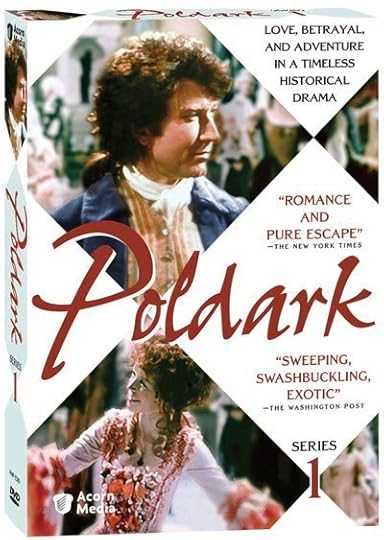 I've long been a British junkie, so the setting of a story on English soil was inevitable. My ancestors are English Scots-Irish and our roots well documented in family genealogy which continues to inspire me. I was also inspired to write this story by my love of such novels as The Scarlet Pimpernel and Poldark, which came out years ago as a Masterpiece theater series. I loved it. Read the novels and watched the series. And I've long been a huge Pimpernel fan. Poldark opens (initially) at the same time period as my story and then continues forward as the saga unfolds. The Scarlet Pimpernel is set later during the blackest days of the French Revolution during the Reign of Terror. I may get to that more bloody time in a later story.
I've long been a British junkie, so the setting of a story on English soil was inevitable. My ancestors are English Scots-Irish and our roots well documented in family genealogy which continues to inspire me. I was also inspired to write this story by my love of such novels as The Scarlet Pimpernel and Poldark, which came out years ago as a Masterpiece theater series. I loved it. Read the novels and watched the series. And I've long been a huge Pimpernel fan. Poldark opens (initially) at the same time period as my story and then continues forward as the saga unfolds. The Scarlet Pimpernel is set later during the blackest days of the French Revolution during the Reign of Terror. I may get to that more bloody time in a later story.
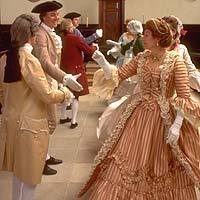 My fascination with England continues. Given the choice, I am more likely to watch a British murder mystery or historical (the two in one being my favorite) than most anything else. Netflix have been great for supplying me with stellar productions. Some of you may wonder how one who is such an ardent fan of colonial America could be so drawn to all things English, but in early America, the New World and the Old World were very intertwined. The common thread in all my work, is my passion for the past. And yes, I will return to my beloved colonial America. Stay tuned.
My fascination with England continues. Given the choice, I am more likely to watch a British murder mystery or historical (the two in one being my favorite) than most anything else. Netflix have been great for supplying me with stellar productions. Some of you may wonder how one who is such an ardent fan of colonial America could be so drawn to all things English, but in early America, the New World and the Old World were very intertwined. The common thread in all my work, is my passion for the past. And yes, I will return to my beloved colonial America. Stay tuned.
Filed under: Uncategorized Tagged: Arts, Barnes & Noble, Cornwall, Dover, England, English historical romance, English Tea Rose, France, French Revolution, history, Home, Master and Commander, Netflix, New Contract with The Wild Rose Press, PJ Harvey, Reign of Terror, Scarlet Pimpernel, The Wild Rose Press, United States








January 16, 2011
"What Can Kill, Can Cure."~
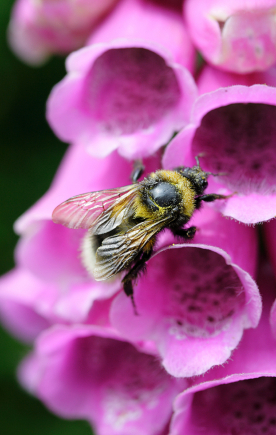 Intermingled with the lovely, poetic quotes are the simple Old herbal sayings. I enjoy both and hope you will take pleasure in this sampling.
Intermingled with the lovely, poetic quotes are the simple Old herbal sayings. I enjoy both and hope you will take pleasure in this sampling.
What can kill , can cure.
The intense perfumes of the wild herbs as we trod them underfoot made us feel almost drunk. ~Jacqueline du Pre
More in the garden grows , than the witch knows.
Sell your coat and buy betony.
 Thine eyes are springs in whose serene And silent waters heaven is seen. Their lashes are the herbs that look On their young figures in the brook. ~William C. Bryant
Thine eyes are springs in whose serene And silent waters heaven is seen. Their lashes are the herbs that look On their young figures in the brook. ~William C. Bryant
No ear hath heard no tongue can tell, The vitue of the pimpernel
Treoil , vervain , st. John's wort dill
Hinder Witches of all their will .
"The air was fragrant with a thousand trodden aromatic herbs, with fields of lavender, and with the brightest roses blushing in tufts all over the meadows…" ~William Cullen Bryant
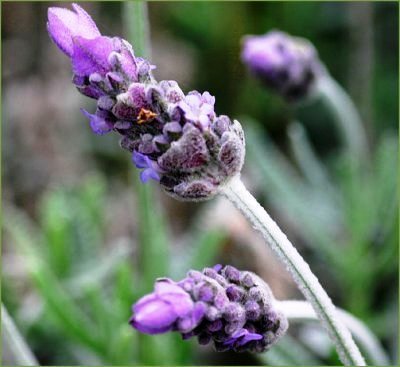 "Here's flowers for you; Hot lavender, mints, savoury, marjoram; The marigold, that goes to bed wi' the sun, And with him rises weeping…"~William Shakespeare, 1611.
"Here's flowers for you; Hot lavender, mints, savoury, marjoram; The marigold, that goes to bed wi' the sun, And with him rises weeping…"~William Shakespeare, 1611.
Where Rosemary grows , the missus is master .
Be silent as the sacred oak !~
Sow fennel , Sow sorrow .
And because the Breath of Flowers is farre Sweeter in the Aire (where it comes and Gose, like the Warbling of Musick) than in the hand, therefore nothing is more fit for delight, than to know what be the Flowers and the Plants that doe best perfume the Aire. ~ Francis Bacon, 1625.
Plant your sage and rue together,
The sage will grow in any weather .
Snakes will not go Where geraniums grow.
My gardens sweet, enclosed with walles strong, embarked with benches to sytt and take my rest. The Knotts so enknotted, it cannot be exprest. With arbours and alys so pleasant and so dulce, the pestylant ayers with flavours to repulse. ~Thomas Cavendish, 1532.
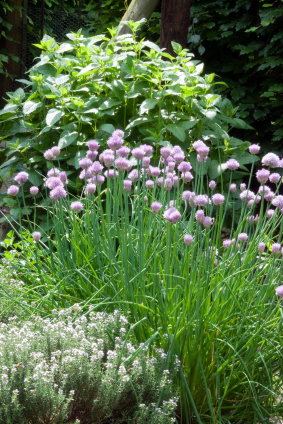 Where the yarrow grows , there is one who knows .
Where the yarrow grows , there is one who knows .
If ye would herbal magic make
Be sure the spell in rhyme be spake
Woe to the lad without a rowan tree-god.
When daisies pied and violets blue, and lady-smocks all silver white. And Cuckoo-buds of yellow hue, do paint the meadows with delight. ~William Shakespeare, 1595.
Rowan tree and red-thread
Put the witches to their speed
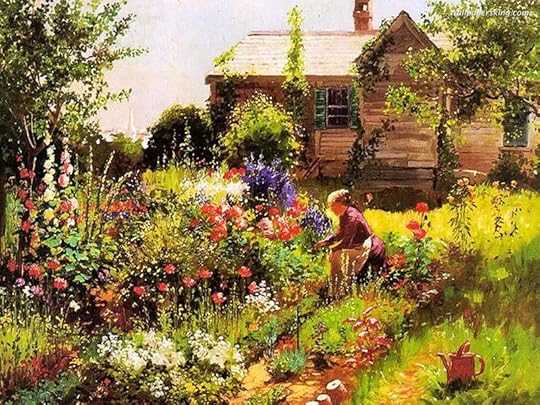 Eat an apple going to bed , make the doctor beg his bread .
Eat an apple going to bed , make the doctor beg his bread .
The fair maid who , the first of May
Goes to the fields at break of day
And washes in dew from the hawthorn tree ,
Will ever after handsome be .
What is Paradise? But a Garden, an Orchard of Trees and Herbs, full of pleasure, and nothing there but delights. ~William Lawson, 1618.
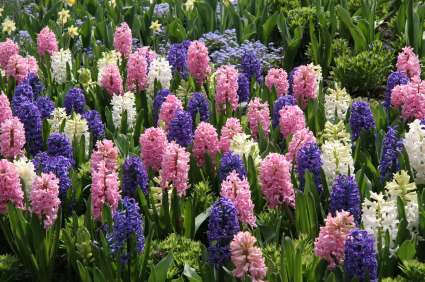 Flowers out of season , sorrow without reason .
Flowers out of season , sorrow without reason .
He would live for aye , must eat sage in May .
One to rot , one to grow
One for the pigeon and one for the crow .
Women with child that eat quinces will bear wise children. ~Dodoens, 1578.
St. John's wort and cyclamen in your bed-chambers keep ,
From evil spells and witcheries , To guard you in your sleep .
"Good morrow, good Yarrow, good morrow to thee. Send me this night my true love to see, The clothes that he'll wear, the colour of his hair. And if he'll wed me…" ~Danaher, 1756.
No mistletoe , no luck .
Faerie-Folks , Are in old oaks .
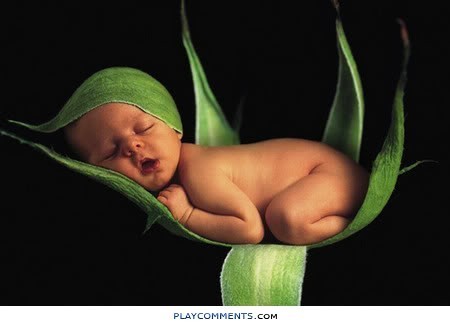 "There's fennel for you, and columbines; there's rue for you; and here's some for me; we may call it herb of grace o'Sundays."
"There's fennel for you, and columbines; there's rue for you; and here's some for me; we may call it herb of grace o'Sundays."
William Shakespeare, 'Hamlet'
"Much Virtue in Herbs, little in Men."
Benjamin Franklin (1706-1790) Poor Richard's Almanac
Filed under: Uncategorized Tagged: Francis Bacon, Herb, Herbal quotes, herbal sayings, St John's wort, Thomas Cavendish, William Cullen Bryant, William Lawson, William Shakespeare








January 15, 2011
"Where the Yarrow Grows There Is One Who Knows"~
 "Faierie-Folks Are in Old Oaks." Old Herbal Saying
"Faierie-Folks Are in Old Oaks." Old Herbal Saying
My fascination with herbs and herbal lore is largely prompted by my absorption with all things historic and the thrill of seeing, touching, tasting, and above all smelling the same plants known by the ancients. Herbs have changed little, if at all, over the centuries and offer us a connection with the past that precious little does in these modern days. It's pure intoxication to rub fragrant leaves between my fingers and savor the scent while pondering the wealth of lore behind these plants. I hope my enthusiasm enriches your life with a deeper awareness of those people who dwelt on this earth long before us. With such a vast trove of plants to delve into, I've only done posts on a handful of herbs, but am working along on adding more.
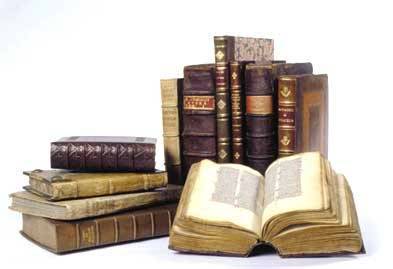 Regarding my resources, my favorite herbal ever, a massive two-part volume, is A Modern Herbal by Mrs. M. Grieve first published in 1931. It's not actually all that modern, but is in comparison to those of the ancient Greek and Roman naturalists, Pliny the Elder (Roman, 23 AD–August 25, 79 AD) Dioscorides (Greek, circa 40—90 AD) and Galen (Roman of Greek ethnicity AD 129-199/217 AD), or British herbalists John Gerard (1545–1612) and Nicholas Culpepper (1616-1654).
Regarding my resources, my favorite herbal ever, a massive two-part volume, is A Modern Herbal by Mrs. M. Grieve first published in 1931. It's not actually all that modern, but is in comparison to those of the ancient Greek and Roman naturalists, Pliny the Elder (Roman, 23 AD–August 25, 79 AD) Dioscorides (Greek, circa 40—90 AD) and Galen (Roman of Greek ethnicity AD 129-199/217 AD), or British herbalists John Gerard (1545–1612) and Nicholas Culpepper (1616-1654).
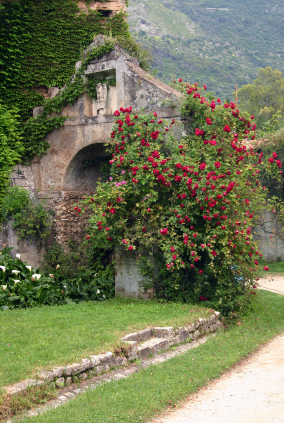 Interesting here to note that Pliny the Elder, whose 37 volume Natural History served as the basis of scientific knowledge for centuries, died on August 25, 79 A.D. while attempting the rescue by ship of a friend and his family from the eruption of Mount Vesuvius that destroyed the cities of Pompeii and Herculaneum. The prevailing wind wouldn't allow his ship to leave the shore. His subsequent collapse and death were attributed to toxic fumes. Go figure. His nephew, Pliny the younger, writer, historian, and Roman senator is also an important figure because of all the letters he left behind detailing events and persons.
Interesting here to note that Pliny the Elder, whose 37 volume Natural History served as the basis of scientific knowledge for centuries, died on August 25, 79 A.D. while attempting the rescue by ship of a friend and his family from the eruption of Mount Vesuvius that destroyed the cities of Pompeii and Herculaneum. The prevailing wind wouldn't allow his ship to leave the shore. His subsequent collapse and death were attributed to toxic fumes. Go figure. His nephew, Pliny the younger, writer, historian, and Roman senator is also an important figure because of all the letters he left behind detailing events and persons.
Back to Maude Grieve and A Modern Herbal, apparently in the early twentieth century it wasn't illegal to include instructions for growing and distilling opiates, but it is now so I won't. However, despite her quaintness or perhaps because of it, there's a wealth of information in her herbal.
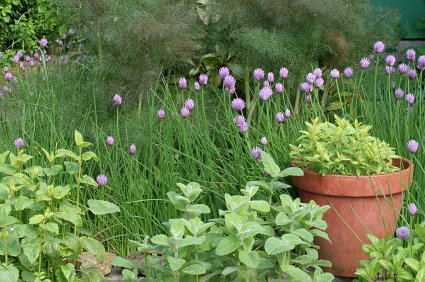 I'm also quite fond of Rodale's Illustrated Encyclopedia of Herbs, by Rodale Press. I misplaced my original volume or foolishly lent it to someone, or perhaps it wasn't mine to begin with and I returned it. All I know is it could not be found and so I bought another. Engrossing.
I'm also quite fond of Rodale's Illustrated Encyclopedia of Herbs, by Rodale Press. I misplaced my original volume or foolishly lent it to someone, or perhaps it wasn't mine to begin with and I returned it. All I know is it could not be found and so I bought another. Engrossing.
A little known volume I've found vastly useful regarding Native American plants and their historic uses is entitled Field Guide to Medicinal Wild Plants by Bradford Angier, published in 1978. This invaluable book was given to me by my dear late grandmother. My collection is a rather random acquisition, but I've learned a lot. OK, so those are my three faves out of all the herbals I've read, available from Amazon and Barnes & Noble. I've also come across innumerable online sites that I refer and link to as they arise.
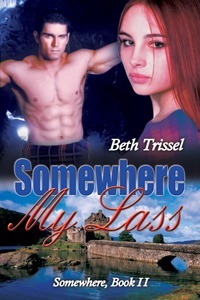 In preparation for writing my light paranormal romance, Somewhere My Lass, I did a lot of research on medieval hospitals and came across some fascinating sites. For medicinal info on ancient British/Scottish practices found at the monastic hospital of Soutra outside of Edinburgh visit: A Day In The Life Of A Medieval Hospital.
In preparation for writing my light paranormal romance, Somewhere My Lass, I did a lot of research on medieval hospitals and came across some fascinating sites. For medicinal info on ancient British/Scottish practices found at the monastic hospital of Soutra outside of Edinburgh visit: A Day In The Life Of A Medieval Hospital.
And try: http://www.redorbit.com/news/health/234047/getting_to_the_roots_of_soutras_old_cures/
For more on medieval hospitals in general visit: http://dodd.cmcvellore.ac.in/hom/10%20-%20Medieval%20Hospital.html
"The herb that can't be got is the one that heals,"~Irish Sayings
 The following herbal excerpt is from Scottish Time Travel Romance Somewhere My Lass:
The following herbal excerpt is from Scottish Time Travel Romance Somewhere My Lass:
Tearing his eyes away from Mora, Neil squirted antibiotic ointment on the deep cut, as he'd often done before, only not to himself. He closed the raw edges of the wound together with a butterfly band aide then covered that with a larger one. "There. That should hold it."
 Aunt Margaret observed the proceedings over his shoulder. "Ye know what yer about, I see. No stitches wanted with that wee dressing. There's naught like a healing salve fer wounds. The ground berries of hemlock, yarrow root, and opium seeds mixed with lard make a fine unguent. Yet yers will serve, I doubt not."
Aunt Margaret observed the proceedings over his shoulder. "Ye know what yer about, I see. No stitches wanted with that wee dressing. There's naught like a healing salve fer wounds. The ground berries of hemlock, yarrow root, and opium seeds mixed with lard make a fine unguent. Yet yers will serve, I doubt not."
Pride in her shining eyes, Mora said, "Neil has much knowledge of healing."
He basked in her praise but suspected Margaret Mackenzie knew a great deal herself.
"Aye. He does that. And he'll have need of it."~
Filed under: Uncategorized Tagged: A Modern Herbal, Bradford Angier, Digital time travel romance novel, Health, Herb, Mount Vesuvius, Pliny the Elder, Rodale Inc., Rodale Press, Rodale's Illustrated Encyclopedia of Herbs, Scottish time travel romance excerpt, suspenseful Scottish time travel








January 13, 2011
"The heart has reasons that reason cannot know."~Pascal
 I shared this post at Sherry Gloag's super blog
The Heart Of Romance
and feel it's worthy of being reposted here for those of you who missed it. Plus, I've updated some of the info about recent writing projects. The question I'm exploring is why I write what I do, specifically why I write across romance genres.
I shared this post at Sherry Gloag's super blog
The Heart Of Romance
and feel it's worthy of being reposted here for those of you who missed it. Plus, I've updated some of the info about recent writing projects. The question I'm exploring is why I write what I do, specifically why I write across romance genres. Many authors wisely choose a genre and stick with it. Most master a specific time period, such as the Regency romance world, and set up camp there. Not me. Like a restless spirit, I wander about visiting various places, even time travel to land in some of them. I recently finished a straight historical romance, my first set in England. Talk about research! Set at the explosion of the French Revolution, I researched the entire revolution, various aspects of life in Georgian England, and as the heroine sails across the channel, I delved into seafaring vessels and terminology.
Many authors wisely choose a genre and stick with it. Most master a specific time period, such as the Regency romance world, and set up camp there. Not me. Like a restless spirit, I wander about visiting various places, even time travel to land in some of them. I recently finished a straight historical romance, my first set in England. Talk about research! Set at the explosion of the French Revolution, I researched the entire revolution, various aspects of life in Georgian England, and as the heroine sails across the channel, I delved into seafaring vessels and terminology. Fortunately my mother has read the brilliant
Master and Commander
series twice and was also a help. Throw in more research into Dover and Cornwall, smuggling…took me months to write this and it's only 25,000 words. Entitled
Into the Lion's Heart
, you'll be hearing more about this story soon. Word is my editor loves it and will be getting back with me asap to get the publication process underway. I think we're shooting for May.
Fortunately my mother has read the brilliant
Master and Commander
series twice and was also a help. Throw in more research into Dover and Cornwall, smuggling…took me months to write this and it's only 25,000 words. Entitled
Into the Lion's Heart
, you'll be hearing more about this story soon. Word is my editor loves it and will be getting back with me asap to get the publication process underway. I think we're shooting for May.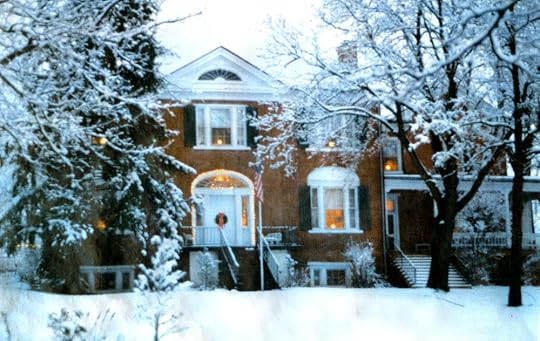 Meanwhile, I'm at work on a light paranormal time travel set in my stomping ground, the Shenandoah Valley of Virginia, the next in my 'Somewhere' series. The story begins in the old family homeplace outside of historic Staunton Virginia, a lovely Georgina home circa 1816. I've chosen 1968 as my jumping off point, having a lot of nostalgia about that time. This would be a Vintage romance except for the ghostly time travel element back to World War One and the year 1918. Yep, more research. But again, a great deal of nostalgia because the grandfather I never personally knew fought in many of the significant battles in France, including the famous or infamous battle of Belleau Wood. Both these stories have elements in common–old homes and ventures into the past–but they are quite different and require vastly different research.
Meanwhile, I'm at work on a light paranormal time travel set in my stomping ground, the Shenandoah Valley of Virginia, the next in my 'Somewhere' series. The story begins in the old family homeplace outside of historic Staunton Virginia, a lovely Georgina home circa 1816. I've chosen 1968 as my jumping off point, having a lot of nostalgia about that time. This would be a Vintage romance except for the ghostly time travel element back to World War One and the year 1918. Yep, more research. But again, a great deal of nostalgia because the grandfather I never personally knew fought in many of the significant battles in France, including the famous or infamous battle of Belleau Wood. Both these stories have elements in common–old homes and ventures into the past–but they are quite different and require vastly different research. Writing would be far easier if I'd stay put, but not, I expect, as much fun. So I write both historical, with varying time periods and settings, and light paranormal romance, generally with a time travel or ghost in the fantasy meld.I follow where my heart leads as new stories beckon.
Writing would be far easier if I'd stay put, but not, I expect, as much fun. So I write both historical, with varying time periods and settings, and light paranormal romance, generally with a time travel or ghost in the fantasy meld.I follow where my heart leads as new stories beckon.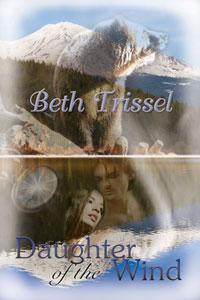 In Daughter of the Wind, I even ventured into the shape shifting realm with a bearwalking Shawnee warrior. Depending upon whom you consult among the Shawnee, they may not consider this to be 'fantasy' but an actual ability some of their people possess, or used to in ages past.
In Daughter of the Wind, I even ventured into the shape shifting realm with a bearwalking Shawnee warrior. Depending upon whom you consult among the Shawnee, they may not consider this to be 'fantasy' but an actual ability some of their people possess, or used to in ages past.
Daughter of the Wind also has a magical moonstone necklace which I wish I could have kept, but the novel sucked that prize in and won't let me have it back. Bummer. But I have all the wonderful memories to keep with me always.
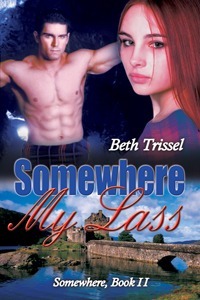 Light paranormal romance Somewhere My Lass was a departure for me in that I also wove kewl sci-fi stuff into this Scottish time travel. My paranormals require the same research I'd do for a historical because there are other time periods to explore, and then the added contemplation involved in otherworldly elements, so they are not easy, but enjoyable in a challenging way. I admit to gleaning inspiration from some of the movies I've seen, and a few stories I've read, but I do have an occasional original thought, more than I'm sometimes given credit for.
Light paranormal romance Somewhere My Lass was a departure for me in that I also wove kewl sci-fi stuff into this Scottish time travel. My paranormals require the same research I'd do for a historical because there are other time periods to explore, and then the added contemplation involved in otherworldly elements, so they are not easy, but enjoyable in a challenging way. I admit to gleaning inspiration from some of the movies I've seen, and a few stories I've read, but I do have an occasional original thought, more than I'm sometimes given credit for.
To further explore my latest light paranormal release, here's the blurb and excerpt from Somewhere My Lass.
Neil MacKenzie's well ordered life turns to chaos when Mora Campbell shows up claiming he's her fiance from 1602 Scotland. Her avowal that she was chased to the future by clan chieftain, Red MacDonald, is utter nonsense, and Neil must convince her that she is just addled from a blow to her head–or so he believes until the MacDonald himself shows up wanting blood.
 Mora knows the Neil of the future is truly her beloved Niall who disappeared from the past. Although her kinsmen believe he's dead, and she is now destined to marry Niall's brother, she's convinced that if she and Neil return to the past, all will be right. The only problem is how to get back to 1602 before it's too late.
Mora knows the Neil of the future is truly her beloved Niall who disappeared from the past. Although her kinsmen believe he's dead, and she is now destined to marry Niall's brother, she's convinced that if she and Neil return to the past, all will be right. The only problem is how to get back to 1602 before it's too late.The balance of the present and future are in peril if she marries another, and the Neil of the present will cease to exist. An ancient relic and a few good friends in the future help pave the way back to the past, but will Mora and Neil be too late to save a love that began centuries before?
Excerpt:
 "You are a beauty." His words were a hoarse whisper.
"You are a beauty." His words were a hoarse whisper.
The rise and fall of her chest betrayed a deep inhalation of breath. A flicker of reproach lit her eyes.
"I dinna think ye took heed of me at all."
He winced at the well-deserved jab. "About before, I'm sorry I left you so suddenly. But there's no earthly way I could fail to notice you. I'd have to be deaf, dumb, and blind and even then…"
 The tension in her face eased and then the hurt returned. "Oh, aye? How could ye forget all ye knew?"
The tension in her face eased and then the hurt returned. "Oh, aye? How could ye forget all ye knew?"
He remained as he was, threading that wealth of hair through his fingers. Again, the rational part of him argued, "Is it possible you're imagining you knew me before?"
She balked, a mutinous glint in her eyes. "Nae."
He slid his hand to the finely crafted silver chain at her throat and coaxed the coverlets further down.
A slight gasp escaped her lips. He muted any outward response to the thrill running through him.
 The scooped neckline of her nightgown revealed the tops of white breasts sprinkled with freckles. Above this heart-hammering sight hung the crucifix. "I gave this to you?" he managed to ask without betraying the swell of emotion surging inside him.
The scooped neckline of her nightgown revealed the tops of white breasts sprinkled with freckles. Above this heart-hammering sight hung the crucifix. "I gave this to you?" he managed to ask without betraying the swell of emotion surging inside him.
"At our betrothal." ~
Filed under: Uncategorized Tagged: Arts, excerpt from time travel romance novel, French Revolution, Historical Romance, Neil MacKenzie, Paranormal, paranormal romance, Regency romance, Reincarnation romance novel, romance, Shawnee, Shenandoah Valley, time travel














